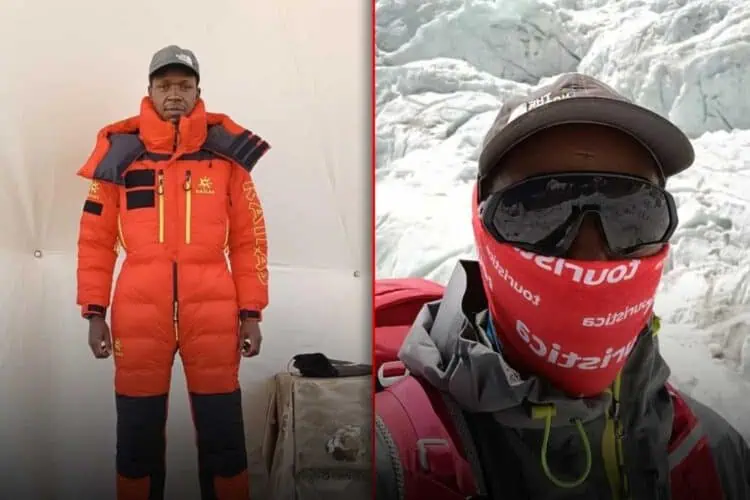Cheruiyot Kirui, a seasoned Kenyan mountaineer, was found dead on Mount Everest during his tenth summit attempt.
Cheruiyot Kirui found dead on Mount Everest
PLEASE NOTE: The third-party content below is shared on our platform for journalistic purposes. Swisher Post, its parent company, partners and affiliates shall not be held liable for any consequence that arises from the journalistic duties performed in sharing this content.
According to reports, Kirui, known for his remarkable climbing achievements, had successfully summited Mount Kenya over ten times before taking on the world’s highest peak.
Tragically, he went missing above 8,000 metres on Everest, an area often referred to as the “death zone” due to its perilous conditions and lack of oxygen.
Kirui was last in contact from the Bishop Rock zone before his disappearance on Wednesday.
His lifeless body was discovered a few metres below the summit on Thursday morning.
Everest Today, a publication focused on mountaineering in the Himalayas confirmed the devastating news.
Kirui had reportedly attempted to scale Everest without supplemental oxygen, a feat that significantly increases the risks associated with high-altitude climbing.
How deadly is a Mount Everest summit?
Mount Everest, standing at 8,848 metres, is renowned for its extreme difficulty and high fatality rate among climbers.
The “death zone” above 8,000 metres is particularly notorious, where the oxygen levels are insufficient to sustain human life for extended periods.
Climbers face numerous hazards, including severe altitude sickness, unpredictable weather, and treacherous terrain.
Despite advancements in climbing gear and techniques, Mount Everest continues to claim lives each year.
The challenges are exacerbated by the physical and mental strain of high-altitude climbing, where even minor mistakes can lead to fatal consequences.
The lack of oxygen, in particular, can lead to impaired judgment, increased risk of falls, and severe health issues such as cerebral or pulmonary oedema.
In recent years, efforts have been made to improve safety on Everest, including better route management and increased support from experienced Sherpas.
However, the mountain’s inherent dangers remain a significant barrier.






